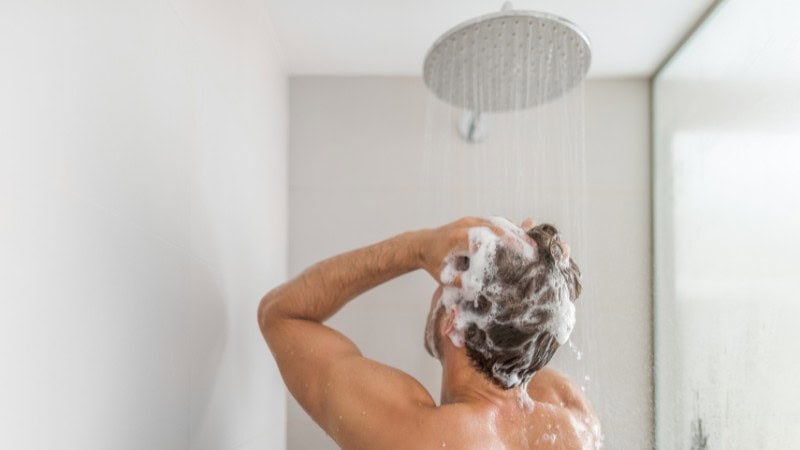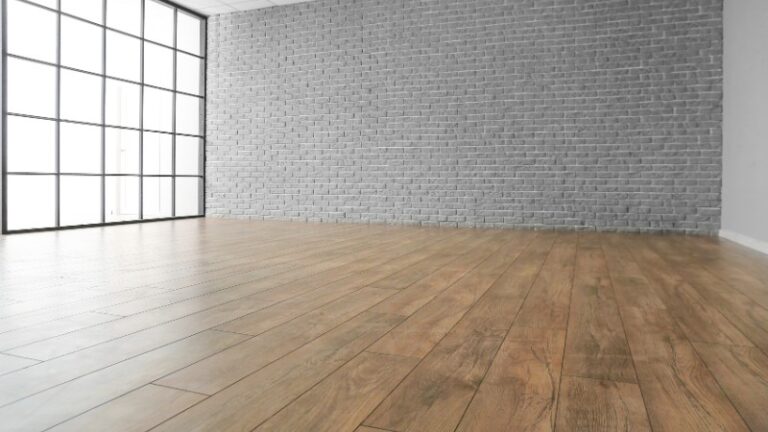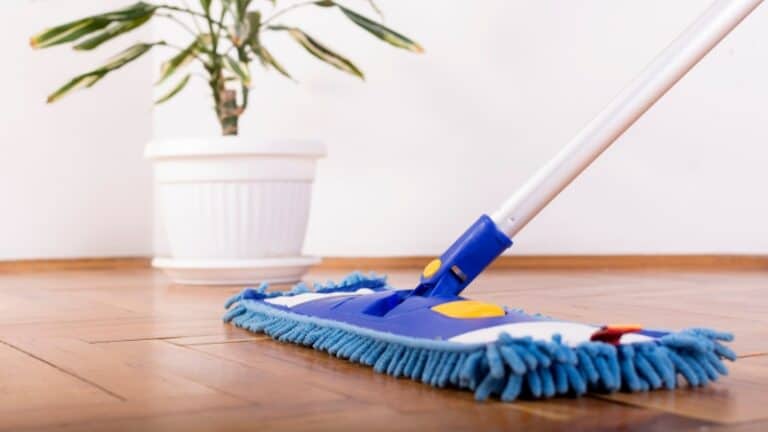Black mold in the shower isn’t just an eyesore—it’s a sign your bathroom might be holding onto more than just steam. Thanks to constant moisture, poor ventilation, and the occasional cracked tile or loose grout, your shower can quickly turn into the ideal breeding ground for mold growth.
It often shows up as black or greenish patches on grout lines, tiles, and shower walls—and it doesn’t take long to spread.
Although the term “toxic black mold” gets thrown around a lot, experts like the CDC clarify that Stachybotrys chartarum isn’t necessarily more harmful than other molds. Still, mold in your shower isn’t something you want to ignore. Mold spores can trigger health problems like allergy symptoms, respiratory issues, and even asthma flare-ups.
The good news?
You can reclaim your shower—with the right methods, a little effort, and a plan to prevent it from coming back. Let’s get into what really works.
Content
- 1 Black Mold in Shower: Health Risks
- 2 7 Ways To Get Rid of Black Mold in Your Bathroom
- 2.1 1. Call Professionals for Deep Bathroom Cleaning
- 2.2 2. Use White Vinegar to Kill Mold
- 2.3 3. Apply Hydrogen Peroxide for Stubborn Mold
- 2.4 4. Use Baking Soda Paste for Mold and Grout Cleaning
- 2.5 5. Scrub with Tea Tree Oil Solution
- 2.6 6. Use Bleach for Severe Mold Growth
- 2.7 7. Ensure Proper Ventilation to Prevent Future Mold
- 3 Need Professional Help? Modern Maids Offers Expert Mold Removal and Bathroom Cleaning Services
- 4 FAQs
Black Mold in Shower: Health Risks

Breathing in the steam from a hot shower might feel refreshing—but if there’s black mold hiding on your shower walls or grout, you could be inhaling more than just water vapor.
Mold spores, especially from types like Serratia marcescens, thrive in constant moisture and poor ventilation, making your shower an easy target. Once airborne, these spores can quietly impact your health, even if you don’t notice them right away.
For many people, the first sign of trouble starts with respiratory issues.
Mold exposure is known to trigger asthma attacks, chronic coughing, or a persistent tightness in the chest. Even if you don’t have a history of breathing problems, you might suddenly find yourself dealing with nasal congestion or sinus irritation that just won’t go away.
The CDC warns that prolonged mold exposure can lead to allergic reactions and, in severe cases, infections in people with weakened immune systems.
The effects often go beyond breathing difficulties. Those allergic to mold may experience itchy eyes, rashes, and frequent sneezing—similar to seasonal allergies but with no clear cause.
If you’re constantly reaching for allergy medications but still feel off, mold in your shower could be a hidden culprit. In homes where mold thrives, even short exposure can provoke reactions in sensitive individuals.
More alarming are the potential long-term effects.
In some cases, black mold can produce mold toxins known as mycotoxins, which—though not always present—can be harmful if inhaled repeatedly.
People have reported symptoms like brain fog, headaches, or constant fatigue, especially when mold exposure goes unnoticed for weeks or months.
The risk only grows for those already dealing with conditions like COPD or severe allergies. Even a small amount of mold in your shower can aggravate flare-ups, make breathing harder, and leave you feeling constantly drained.
For anyone with respiratory conditions, toxic mold isn’t just a cleaning concern—it’s a health hazard that demands immediate attention.
If you’ve been noticing recurring health issues with no obvious cause, your shower might be telling you something your body already knows.
7 Ways To Get Rid of Black Mold in Your Bathroom
1. Call Professionals for Deep Bathroom Cleaning

If you’ve ever stood in the shower wondering why those dark spots on the grout just keep coming back—despite your best scrubbing efforts—you’re not alone.
Black mold in the shower can be relentless. It sneaks into corners, hides behind bathroom tile, and thrives in places your usual cleaning tools can’t reach.
And here’s the thing: trying to tackle it with just a spray bottle and determination might not be enough.
This is where a professional cleaning service like Modern Maids makes a real difference.
Our deep bathroom cleaning goes beyond surface-level shine. Equipped with the right tools, non-toxic cleaning solutions, and protective gear, their team can safely remove mold from areas that are often missed.
Whether it’s mold growing behind a shower curtain, along cracked tiles, or inside loose grout, We know how to handle it without stirring up mold spores that could worsen indoor air quality.
Another benefit of hiring professionals?
They don’t just clean; they assess. Modern Maids can help you understand what’s fueling the mold growth, whether it’s constant moisture, poor ventilation, or something more hidden.
We’ll even offer tips on how to prevent mold from coming back—so you don’t end up on a never-ending cleaning loop.
That said, if you’re the hands-on type and feel ready to roll up your sleeves, DIY mold removal is doable (and we’ll get to that next).
But for a fast, stress-free solution that leaves your shower spotless and safe? Booking a professional bathroom cleaning might just be the smartest first step.
2. Use White Vinegar to Kill Mold
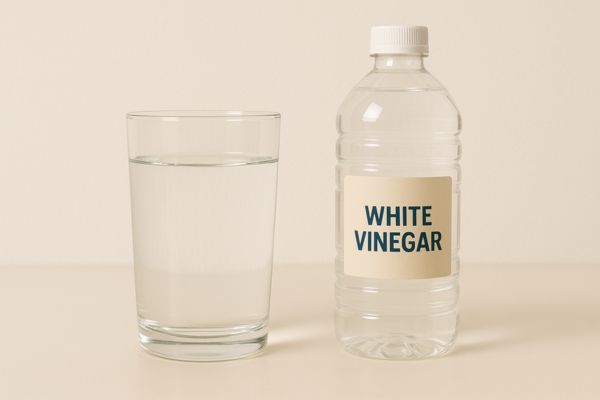
Sometimes, the simplest tools in your kitchen can be your greatest allies in the bathroom. If you’ve noticed black mold creeping along your shower walls or lingering in corners of the tub, reach for white vinegar.
It may not have a flashy label or bold warnings like chemical cleaners, but it’s a quiet powerhouse when it comes to mold removal.
White vinegar—especially the distilled kind—contains acetic acid, which can break down mold at the root.
Just pour it undiluted into a spray bottle, aim it at the moldy areas, and let it sit. One hour is the sweet spot to allow the acid to penetrate those stubborn mold spores.
After that, scrub it down with a brush or wipe it off with paper towels. The vinegar will kill mold, though you might still see discoloration, especially on older mold stains, which can be tackled with a follow-up cleaner.
While it may not work as instantly as a bleach solution, vinegar has staying power. When used regularly, it can help prevent mold from making a comeback—especially in those corners that stay damp longer than they should.
It’s safe, inexpensive, and doesn’t fill your bathroom with chemical fumes. If you’re going the DIY route, this is a great first line of defense.
3. Apply Hydrogen Peroxide for Stubborn Mold
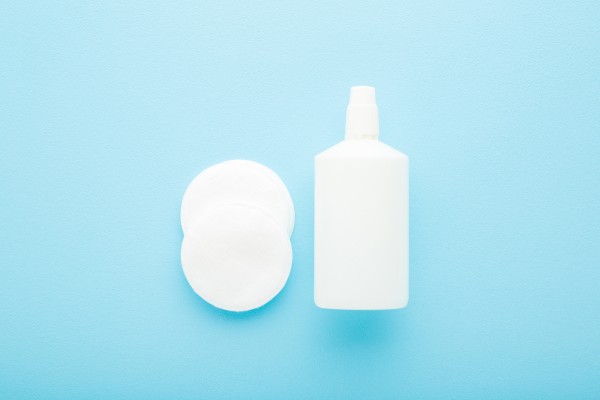
When vinegar doesn’t cut it and that black mold just won’t budge, it’s time to bring in something with a little more punch—hydrogen peroxide.
Found in nearly every medicine cabinet, this common disinfectant can do wonders in the fight against shower mold, especially in areas where constant moisture keeps mold returning again and again.
Hydrogen peroxide (3% solution) is tough on mold but gentle enough not to ruin most surfaces.
It’s especially useful on bathroom tile and grout lines, where mold tends to settle in deep. Just pour it into a spray bottle and give the affected area a generous mist. Let it sit undisturbed for about 10 to 15 minutes.
That’s when the fizzing magic happens—proof it’s reacting with the mold. Then, grab your scrub brush and go to work before rinsing the area clean with warm water.
One important tip: always test a small area before going all in.
Some materials can discolor with hydrogen peroxide, especially if it’s not fresh. Peroxide begins to lose effectiveness once the bottle is opened, so if it’s been sitting in your cabinet for ages, grab a new one for best results.
Used correctly, hydrogen peroxide can help kill mold and sanitize your bathroom without the overpowering scent or harshness of bleach. It’s a reliable option for those stubborn spots that refuse to go quietly.
4. Use Baking Soda Paste for Mold and Grout Cleaning
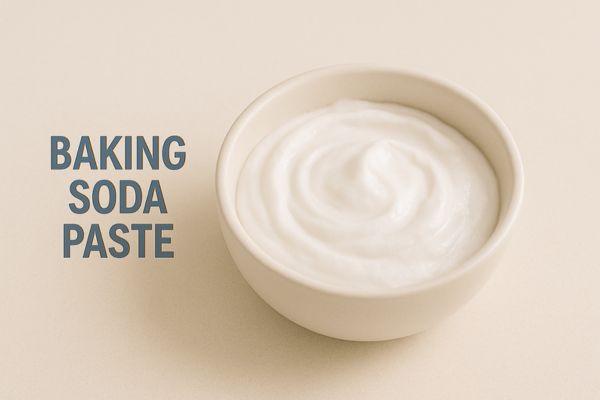
Ever wondered if the same baking soda you use for freshening up your fridge can tackle black mold in the shower?
The answer is yes.
While baking soda may not be the most aggressive mold killer out there, it’s incredibly helpful when it comes to scrubbing moldy areas and deodorizing musty smells. It’s safe, affordable, and surprisingly effective when used in the right way.
To get started, mix a few tablespoons of baking soda with just enough water to make a thick paste. Apply it directly onto the moldy areas, especially between grout lines or in tight corners where mold thrives.
Let it sit for 15 to 20 minutes so it has time to absorb moisture and loosen buildup. Then, grab your scrub brush or sponge and start working it in. Its gentle grit won’t damage tile or grout but can still remove soap scum, grime, and light mold stains.
Baking soda alone might not kill mold spores completely, but it’s an excellent option for those looking for a non-toxic way to clean and control mold in the shower. If some discoloration remains, follow up with a diluted bleach solution or hydrogen peroxide for a more complete clean.
And the best part? There are no fumes, no risks to kids or pets, and no need for protective gear. Just simple ingredients, a little elbow grease, and a noticeably cleaner bathroom.
5. Scrub with Tea Tree Oil Solution

If you’re after a natural solution that packs a serious punch, tea tree oil might be your mold-fighting MVP.
While it’s not the cheapest option on the shelf, its antifungal and antibacterial properties make it one of the most effective ways to get rid of black mold in the shower—especially when you’re dealing with mold in your grout or along shower walls.
To use it, mix about one teaspoon of tea tree oil with a cup of water and pour the solution into a spray bottle. Shake it well, then spray directly onto the affected areas.
No spray bottle? No problem. You can dip a cloth into the mixture and wipe it onto moldy surfaces. Let it sit undisturbed for at least an hour so the tea tree oil has time to break down mold spores and penetrate deep into those moldy areas.
After it sits, scrub thoroughly using a sponge or scrub brush, rinse with warm water, and dry completely.
The scent of tea tree oil can be a little strong at first, but it fades as the surface dries—and what it leaves behind is a clean, mold-free space that’s naturally protected against future growth.
What makes tea tree oil especially useful is its residual effect.
Unlike some solutions that work only in the moment, this one helps prevent mold from coming back—making it ideal if you’re looking for a more long-term fix without relying on harsh chemicals.
6. Use Bleach for Severe Mold Growth

When mold has taken over your shower walls and no amount of gentle scrubbing seems to help, it’s time to bring out the heavy-duty option: bleach.
Known for its strong disinfecting power, a diluted bleach solution is often the go-to method for tackling widespread black mold growth—especially on hard, non-porous surfaces like tiles and glass.
To use it safely, mix one part chlorine bleach with ten parts water. Apply the solution to the affected areas using a sponge, cloth, or spray bottle, making sure every inch of the moldy surface is covered.
Let it sit for 10 to 15 minutes to give it time to kill mold spores. Afterward, scrub the area with a stiff brush and rinse thoroughly with clean water.
Once everything’s dry, take a close look.
If you still see mold stains or discoloration, repeat the process using a fresh batch of the cleaning solution. While bleach is excellent for mold removal on tile or sealed grout, avoid using it on porous materials like fabric, wood, or drywall—those areas might need a different approach.
Because bleach fumes can be strong and potentially harmful, make sure your bathroom is well-ventilated before you begin. Open windows, turn on the bathroom fan or exhaust fan, and wear rubber gloves and protective eyewear for added safety.
Bleach may be tough on mold, but it’s also tough on your lungs, so use it smartly and always with caution.
When used properly, it can be an incredibly effective solution for restoring your shower to a clean, mold-free space.
7. Ensure Proper Ventilation to Prevent Future Mold
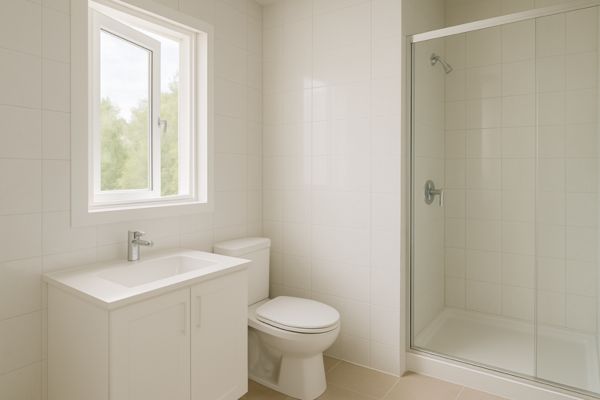
Killing mold is one thing—keeping it from coming back is another. If you’ve cleaned, scrubbed, and disinfected every inch of your shower only to see mold reappear in a week or two, there’s a good chance your bathroom has a ventilation problem.
Mold thrives in spaces where steam lingers and surfaces stay damp.
The fix?
Stop the moisture buildup before it starts.
Start by using an exhaust fan every time you shower—and don’t turn it off as soon as you’re done. Let it run for at least 15–20 minutes after to pull excess moisture out of the air.
If your bathroom doesn’t have a fan, crack open a window during and after showers. Keeping the bathroom door open after use also helps fresh air circulate and speeds up the drying process.
For homes in humid climates or bathrooms with limited airflow, a small dehumidifier can make a huge difference. These units help lower humidity levels and are especially useful in windowless bathrooms. If a dehumidifier isn’t an option, installing an air vent can improve air circulation and reduce the risk of constant moisture buildup.
Other simple changes also go a long way. Avoid hanging wet towels in the bathroom, and instead dry them in a well-ventilated space or a dryer.
Lay down absorbent mats near the tub or shower and wash them frequently to prevent moldy areas from forming beneath.
The goal is to keep indoor humidity between 30% and 60%—a sweet spot that mold spores don’t like.
By actively reducing moisture and encouraging airflow, you’ll not only prevent mold growth but also extend the effects of your mold removal efforts. Think of good ventilation as your first line of defense—and one of the easiest to implement.
Need Professional Help? Modern Maids Offers Expert Mold Removal and Bathroom Cleaning Services
Black mold doesn’t wait for an invitation, and once it shows up, it has no plans of leaving quietly. But whether you’ve tackled it with baking soda, vinegar, or bleach, the key to winning the mold battle is consistency—and sometimes, calling in the pros.
If your bathroom keeps turning into a mold magnet no matter what you try, don’t stress. Modern Maids is just a call (or click) away. Our team knows all the sneaky places mold likes to hide and how to get rid of it—for good. We’ll deep clean every tile, scrub every grout line, and leave your bathroom looking (and smelling) like it never met a mold spore in its life.
So why keep wrestling with your scrub brush?
Dial (469)-430-8860 for a mold-free makeover, Or book your service online: modern-maids.com/booking-page
Let us do the dirty work—so you can breathe easy and enjoy a shower that feels fresh, not fungal.
FAQs
Is Black Mold in Shower Dangerous?
Yes, black mold in your shower can be dangerous, especially with prolonged exposure. It releases mold spores that may trigger allergy symptoms, respiratory conditions, and skin irritation. If you have a weakened immune system or a mold allergy, black mold exposure can lead to more serious health issues. Even if you’re healthy, constant moisture and poor ventilation can turn your shower into an ideal breeding ground for mold—making it essential to address the problem early and thoroughly.
How to Clean Black Mold in Shower?
To clean black mold in the shower, start with a mold-killing solution like undiluted white vinegar, hydrogen peroxide, or a diluted bleach solution. Spray it onto affected areas, let the solution sit, then scrub with a brush or sponge. Don’t forget to dry completely afterward to avoid moisture buildup. For tougher spots, baking soda paste or tea tree oil can help. If the mold keeps returning, calling a professional mold removal service like Modern Maids is a smart and safe solution.
How to Prevent Black Mold in Shower?
Preventing black mold in your shower starts with reducing excess moisture. Always use an exhaust fan or open a window to improve airflow after showers. Wipe down wet surfaces like shower walls and bathroom tile, and keep the shower curtain dry. Avoid leaving wet towels hanging inside the bathroom. Using a dehumidifier or air purifier can also help if the humidity is high. Regular cleaning with vinegar or baking soda can keep mold spores from settling and forming stains.
Is It Safe to Clean Black Mold Yourself?
Cleaning black mold yourself can be safe if the affected area is small and you take proper precautions. Wear rubber gloves and protective gear to avoid skin irritation and inhaling mold toxins. Use effective mold cleaners like hydrogen peroxide, bleach solution, or white vinegar. However, toxic black mold or mold that covers a large area should be handled by professionals. If you notice mold stains reappearing or experience allergy symptoms, it’s best to leave mold removal to the experts.

